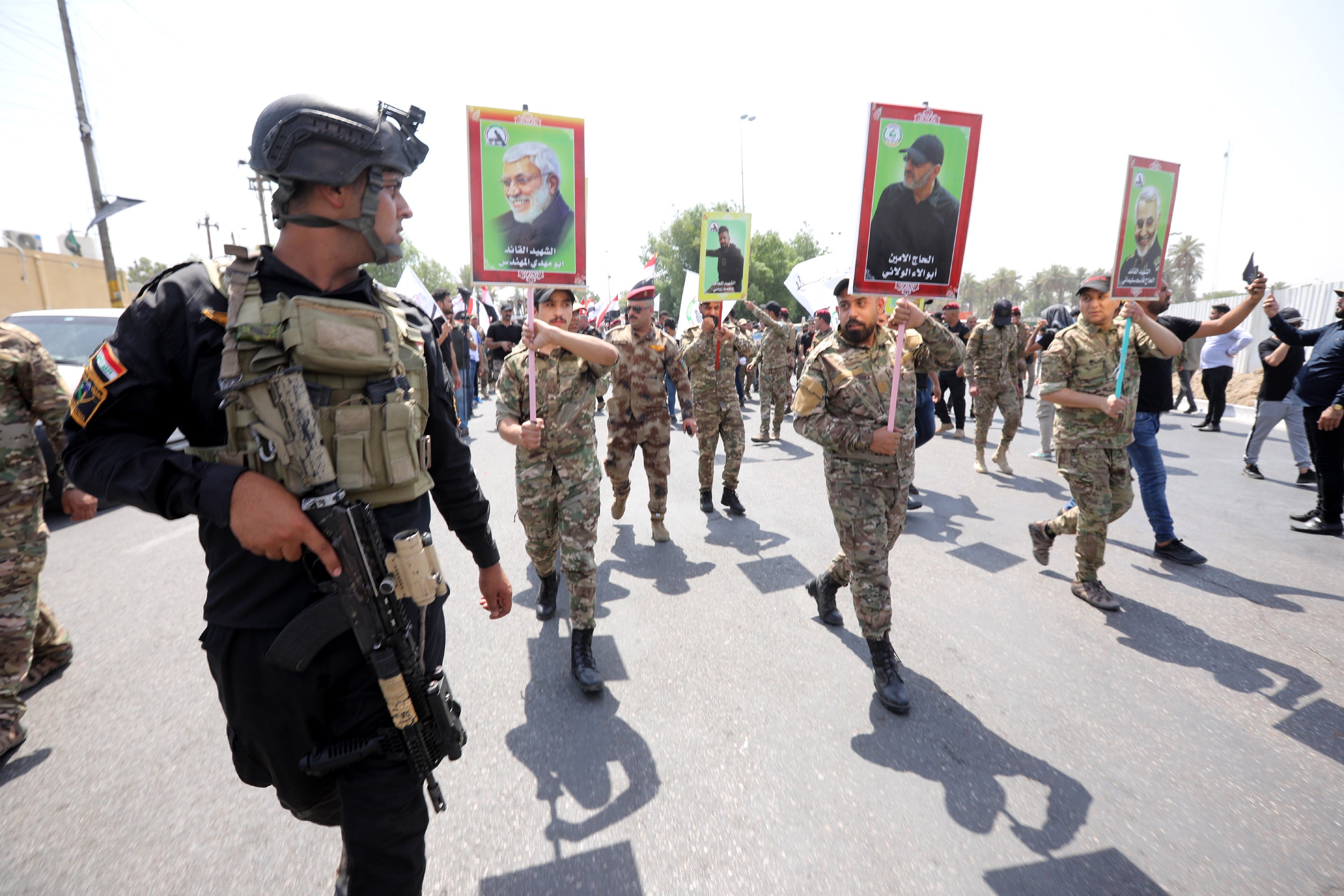US bases in Iraq and Syria targeted in militia rocket and drone attacks
At least two US bases were hit in the attacks

Your support helps us to tell the story
From reproductive rights to climate change to Big Tech, The Independent is on the ground when the story is developing. Whether it's investigating the financials of Elon Musk's pro-Trump PAC or producing our latest documentary, 'The A Word', which shines a light on the American women fighting for reproductive rights, we know how important it is to parse out the facts from the messaging.
At such a critical moment in US history, we need reporters on the ground. Your donation allows us to keep sending journalists to speak to both sides of the story.
The Independent is trusted by Americans across the entire political spectrum. And unlike many other quality news outlets, we choose not to lock Americans out of our reporting and analysis with paywalls. We believe quality journalism should be available to everyone, paid for by those who can afford it.
Your support makes all the difference.Iranian-backed Iraqi militias launched several rocket and drone barrages on facilities hosting American forces in Iraq and Syria on Wednesday, just nine days after deadly United States airstrikes on the armed groups that were meant to deter such attacks.
US and local media outlets reported attacks on the Ain al-Assad airbase in western Iraq, another facility in the northern Iraqi city of Erbil overnight and another attack on an oil field where American forces are positioned in northeast Syria.
At least two people suffered minor injuries after 14 rockets struck the massive military base at Ain al-Assad shortly after noon local time, a US official said.
“The rockets landed on the base and perimeter,” US Col. Wayne Marotto, spokesman for US-led forces in Iraq, said in a tweet. “Force protection defensive measures were activated.”
Col Marotto vowed “100 per cent accountability” for the Ain al-Assad attack, suggesting the possibility of a US counterattack.
The rockets were reportedly launched from Khan al-Baghdadi, a village that lies near the airbase. Photos posted online by Iraqi security forces suggested the launchers had been destroyed in subsequent counter-attacks.
The Security Media Cell, affiliated with Iraq’s security forces, said a mobile rocket launcher used in the attack was hidden in a truck loaded with bags of flour and parked in the village. It said aside from the 1 4 rockets which were fired towards the base the rest exploded on the truck, damaging some village homes and a mosque. The Iraqi government, meanwhile, called it a “terrorist attack” and a “flagrant violation” of Iraqi laws.
A previously unknown group calling itself “The brigades to avenge al-Muhandis,” said its members fired 30 rockets toward the base “run by American occupiers.” In a threatening message to American forces, it added: “We will force you to leave our lands defeated.” The group is named after a top Iraqi militia leader Abu Mahdi al-Muhandis who was killed last January in a surprise US drone attack on Baghdad airport along with top Iranian General Qassem Soleimani.
Wednesday’s targeting of Ain al-Assad amounts to a potentially dangerous round of escalation in the ongoing tit-for-tat rivalry between Iran and the US in Iraq. Iran and its allies in the Iraqi political elite have stepped up demands that the US withdraw its troops from the country following the assassinations of Iranian clandestine forces commander Qassem Suleimani and Iraqi militia leader Abu Mahdi al-Mohandes in a January 2020 US drone strike.
Attacks on US facilities by Iranian-backed militia groups appear to be accelerating following the 28 June airstrikes, which were in response to continuing attacks on American facilities in Iraq. At least four militiamen were killed in the US airstrikes, prompting raucous funerals and demands for revenge.
Ain al-Assad was the target of a rocket attack on Monday, with no casualties. Late Tuesday an airport housing US troops in northern Iraq was also hit in a drone attack that caused no injuries. In Syria, the US-backed and Kurdish-led Syrian Democratic Forces said in a statement that drones were used to also attack the al-Omar oil field in Syria’s eastern province of Deir Azzour, which hosts US forces.
It added that the attack was foiled and that further details would be released. Iran’s state-owned Press TV attributed the attacks to the “Iraqi resistance movement,” a reference to Shia militias that are often trained, armed or financed by Tehran.
“Most likely, the strike was meant to destroy very important and expensive equipment and installations belonging to US troops,” said the report.
Join our commenting forum
Join thought-provoking conversations, follow other Independent readers and see their replies
Comments